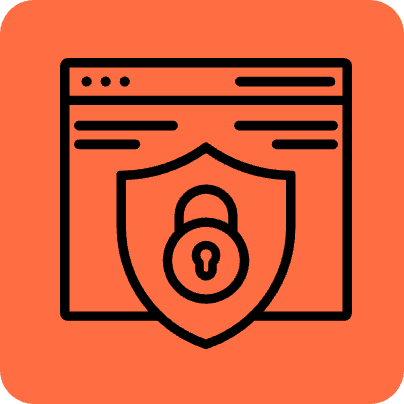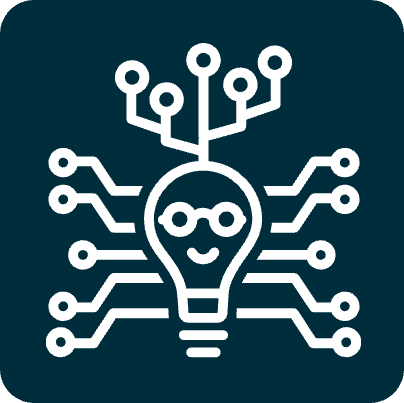In the digital realm, where innovation and security dance in a delicate balance, the role of cybersecurity unfolds as a mythic saga, where tech titans are forging a digital pantheon that reshapes the very fabric of our existence.
In this age of technological mythology, imagine artificial intelligence (AI) as Prometheus, bringing the fire of knowledge to enhance cybersecurity solutions and augment cybersecurity professionals. Envision quantum computing as the enigmatic Hades, ruling the depths of computational possibilities. Picture Athena, goddess of wisdom, armed not with spear and shield, but with threat exposure management and quantum-safe encryption algorithms.
How can you keep track of all these cybersecurity tech mythologies? How can you stay updated with the constantly evolving world of cybersecurity technology? How can you identify the most effective technologies to enhance your risk management and mitigate the cyber risks facing your business?
One solution is to leverage the Eviden Cyber Tech radar, a technology radar that our cybersecurity experts use to track, test, and rank established and emerging cybersecurity tech trends based on their maturity and adoption rates. The Cyber Tech Radar serves as your modern-day oracle, assisting decision-makers in testing the robustness of their cybersecurity strategy. Remember, in this era of rapid technological evolution, resilience is not only found in robust defenses but also in the ability to anticipate, adapt, and innovate in the face of an ever-expanding cyber industry.
Ultimately, the success of a cybersecurity strategy depends on the ability to navigate through four key pillars that are outlined below.
Pillar 1: Strong Foundations
 Identity-first security
Identity-first security
Initiate your cybersecurity journey by establishing a robust identity-first fabric. This involves the meticulous management of third-party risk, workforce and customer identity, and the monitoring of identity lifecycles across heterogeneous systems. Technologies like Customer Identity and Access Management (CIAM) enhance the control and security of customer identities, while AI for Identity and Access Management (AI4IAM) infuses intelligence to detect anomalies and potential threats through identity threat detection and response, as well as to ensure impeccable identity hygiene with provisioning and rights reconciliation.
 Application security
Application security
In the realm of application security, the modern landscape demands a shift towards composable architecture. This flexible approach accommodates the fragmented regulatory environment of data privacy and data sovereignty, among other things, enabling organizations to adapt swiftly to diverse compliance standards worldwide. Adopting this architecture ensures applications are designed with a modular and interchangeable approach, allowing for seamless compliance adjustments.
 Software Bill of Materials (SBOM):
Software Bill of Materials (SBOM):
Responding to emerging regulations, the implementation of SBOM becomes pivotal. This practice involves creating a comprehensive list of software components and dependencies, offering transparency into the application’s makeup. This not only aids in vulnerability management but also aligns with regulatory requirements and standards, such as those stipulated by the EU’s Cyber Resilience Act, scheduled for adoption in 2024.
 Cloud-Native Application Protection Platform (CNAPP)
Cloud-Native Application Protection Platform (CNAPP)
Safeguarding dynamic application environments requires a comprehensive approach. A cloud-native application protection platform integrates real-time workload visibility, container security, serverless protection, API security and workload detection and response to provide a holistic protection. This ensures applications are shielded from a multitude of cyber threats, enabling organizations to securely adopt and develop modern applications.
Pillar 2: A Threat Exposure Management Program
Transitioning from traditional detection and response strategies to Continuous Exposure Management (CEM) represents a pivotal shift for organizations, modernizing security operation centers and steering enterprises towards a proactive approach to risk reduction cycles and facilitate effective remediation.
Adopting Continuous Threat Exposure Management (CTEM) processes promises not only optimized short-term responses but also an enhanced long-term security posture. CTEM leads the evolution of security operations centers (SOC) functionalities by encouraging cross-team collaboration and the adoption of risk reduction methodologies to streamline remediation efforts. To embark on this journey, organizations must leverage cyber technologies tailored for comprehensive exposure management. Two critical components in this arsenal are as follows:
 External Attack Surface Management (EASM)
External Attack Surface Management (EASM)
This enhances the discovery and prioritization of assets’ exposure. By systematically scanning external attack surfaces, organizations may gain a holistic view of potential vulnerabilities. This aids in prioritizing remediation efforts, ensuring critical assets are promptly secured. The benefits extend beyond immediate threat response, contributing significantly to long-term security posture enhancement.
Digital Risk Protection Services I n 2024, as various countries gear up for elections, the ominous specter of fake news is poised to proliferate, specifically targeting political and economic stabilities. Studies increasingly highlight the correlation between misinformation and the consequential fluctuations in stock prices. Consequently, addressing disinformation threats becomes an imperative task for organizations seeking to maintain resilience in the face of these challenges. Proactively identifying and uncovering disinformation is a use case covered by Digital Risk Protection services.
n 2024, as various countries gear up for elections, the ominous specter of fake news is poised to proliferate, specifically targeting political and economic stabilities. Studies increasingly highlight the correlation between misinformation and the consequential fluctuations in stock prices. Consequently, addressing disinformation threats becomes an imperative task for organizations seeking to maintain resilience in the face of these challenges. Proactively identifying and uncovering disinformation is a use case covered by Digital Risk Protection services.
The optimal efficacy of these technologies is realized when they are seamlessly correlated within a Managed Detection and Response (MDR) platform. This integration consolidates all security solutions, ensuring the organization remains free of blind spots. Moreover, an MDR platform facilitates real-time enrichment, expediting the detection and streamlining the remediation process for a more comprehensive and agile cybersecurity defense.
Pillar 3: Regulatory framework monitoring
 Navigating the privacy maze
Navigating the privacy maze
In 2024, the cybersecurity focus extends beyond immediate threat exposures to encompass the complex terrain of privacy laws. Anticipated releases of numerous privacy laws demand organizations should remain vigilant, adapting policy and compliance management tools to align with diverse and evolving regulations.
 Data sovereignty controls
Data sovereignty controls
Additionally, the global call for data sovereignty controls adds a layer of complexity. Organizations must be prepared to navigate the intricacies of varying data localization requirements, ensuring compliance with jurisdiction-specific mandates to safeguard sensitive information effectively.
 Automation for compliance
Automation for compliance
In the face of this regulatory complexity, the trend leans heavily towards automation. Organizations that adopt compliance automation will not only streamline the process of adhering to ever-changing regulatory frameworks but also enhance the efficiency of exposure management by ensuring consistent alignment with privacy and data sovereignty controls.
Pillar 4: Preparing for the Future
As the cybersecurity landscape continues to evolve, forward-thinking decision-makers recognize the imperative of preparing for the future. This entails not only adapting to current threats but proactively testing disruptive technologies that will shape the next era of cybersecurity.
 Privacy Enhancing Computation (PEC)
Privacy Enhancing Computation (PEC)
Testing disruptive technologies like Privacy Enhancing Computation (PEC) becomes paramount. PEC enables the secure processing of data while preserving privacy, making it a cornerstone in the evolving data protection landscape. By assessing and integrating PEC, organizations can navigate privacy concerns in an increasingly data-centric environment.
 Readiness assessment for Post-Quantum Cryptography (PQC)
Readiness assessment for Post-Quantum Cryptography (PQC)
Another critical aspect of future preparedness is conducting readiness assessments for Post-Quantum Cryptography (PQC). As quantum computing advancements pose a potential threat to current cryptographic methods, PQC ensures organizations are ready for the cryptographic landscape of tomorrow. By running readiness assessments, organizations can gain visibility into their cryptographic assets and measure the operational and financial impact of integrating PQC into their cybersecurity infrastructure.
 GenAI and Security: A dualistic approach
GenAI and Security: A dualistic approach
The synergy between GenAI and security is undeniable. Much like Janus, the Roman god with two heads looking in opposite directions, GenAI, with its capabilities in data analysis, pattern recognition, and decision-making, requires a robust cybersecurity foundation. Similarly, in the face of evolving threats, cybersecurity benefits immensely from the augmentation provided by GenAI.
With many organizations planning to test and pilot GenAI in their environments, it’s crucial to understand the intersection of GenAI and security. GenAI’s role in enhancing cybersecurity involves rapid threat detection, incident response automation, and adaptive learning from evolving threats. Furthermore, the exploration of how GenAI can actively improve cybersecurity strategies is a promising avenue for organizations looking to fortify their defenses against sophisticated threats. However, GenAI is not secured by design and, therefore, organizations must run privacy and risk impact analyses to identify cyber risks and build security controls to ensure trust, ethics and security are integrated into this emerging technology.
In this era of rapid and constant digital transformation, the combination of traditional security practices and innovative technologies is the key to resilience. Organizations that weave these trends into their cybersecurity strategy position themselves not merely as guardians of data but as pioneers shaping the future of cybersecurity in an interconnected and ever-evolving digital world.











